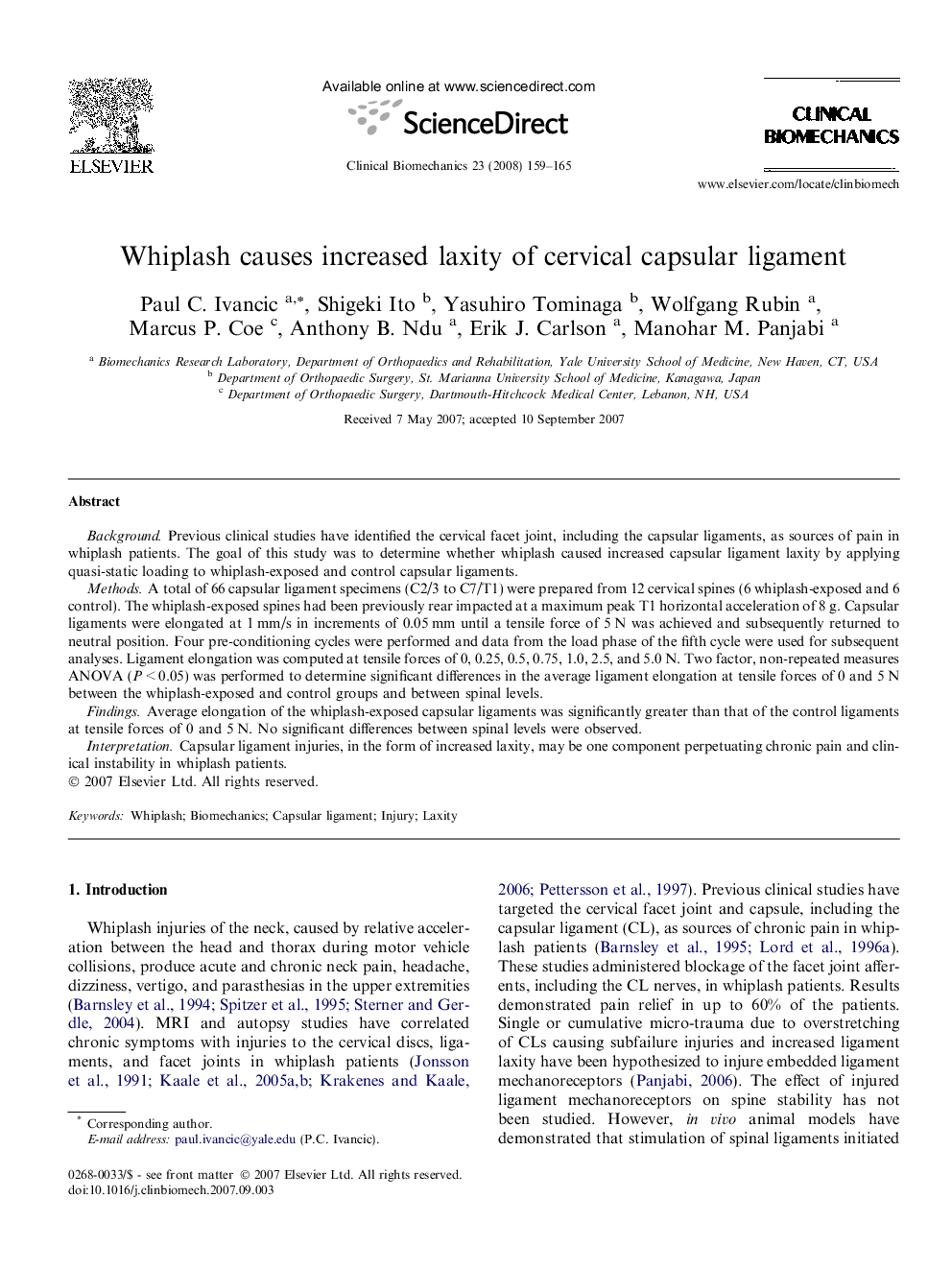| Article ID | Journal | Published Year | Pages | File Type |
|---|---|---|---|---|
| 4051126 | Clinical Biomechanics | 2008 | 7 Pages |
BackgroundPrevious clinical studies have identified the cervical facet joint, including the capsular ligaments, as sources of pain in whiplash patients. The goal of this study was to determine whether whiplash caused increased capsular ligament laxity by applying quasi-static loading to whiplash-exposed and control capsular ligaments.MethodsA total of 66 capsular ligament specimens (C2/3 to C7/T1) were prepared from 12 cervical spines (6 whiplash-exposed and 6 control). The whiplash-exposed spines had been previously rear impacted at a maximum peak T1 horizontal acceleration of 8 g. Capsular ligaments were elongated at 1 mm/s in increments of 0.05 mm until a tensile force of 5 N was achieved and subsequently returned to neutral position. Four pre-conditioning cycles were performed and data from the load phase of the fifth cycle were used for subsequent analyses. Ligament elongation was computed at tensile forces of 0, 0.25, 0.5, 0.75, 1.0, 2.5, and 5.0 N. Two factor, non-repeated measures ANOVA (P < 0.05) was performed to determine significant differences in the average ligament elongation at tensile forces of 0 and 5 N between the whiplash-exposed and control groups and between spinal levels.FindingsAverage elongation of the whiplash-exposed capsular ligaments was significantly greater than that of the control ligaments at tensile forces of 0 and 5 N. No significant differences between spinal levels were observed.InterpretationCapsular ligament injuries, in the form of increased laxity, may be one component perpetuating chronic pain and clinical instability in whiplash patients.
